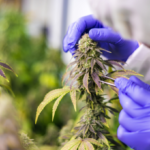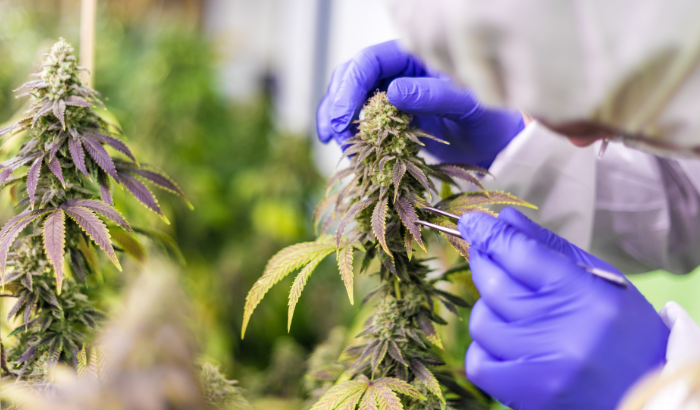
Here is a prediction, albeit one that I will not expect more than a cookie for foreseeing if I am correct. It’s pretty obvious to those paying attention, but here it goes anyway: As you may have sensed in recent coverage of cannabis, in Massachusetts and across the country, a quagmire, perhaps even a smallish war, is looming over the fate of those who drive high.
There have already been some battles, sure. And we heard countless lines about the dangers of stoned driving from plenty of prohibitionists while our state’s recreational cannabis law was in limbo. But that has been a minor fender bender compared to the crash between reality and ideology that lies ahead.
Even though I mostly ride the train or sit in shotgun, I do have thoughts and ideas of my own about driving while stoned. I’ve written on this critically important safety concern before, and take it seriously, all while ringing the unpopular reminder bell that no matter how many people drive high on cannabis, there is a much worse danger of prescription painkiller abusers and recidivist drunks on the road. My personal takes on the topic don’t matter, though, much like how the whims that some officials still harbor about the devil’s lettuce are completely worthless. What is important is that people scan the landscape to see how the enforcers are posturing and to see what facts and research they are using to defend their positions.
First and most important when it comes to the legality of driving while stoned in the Bay State is that “Nothing in [the Mass Adult Use of Marijuana regulations] allows the operation of a motor vehicle, boat, or aircraft while under the influence of marijuana.” There’s no official way for a police officer to tell if you are stoned unless they catch you in the act of getting high—we’ll get to that in a second—but if they can somehow prove it in court, or if the motorist conceded for some reason, you face the same penalties as a drunk driver. For more on that, we recommend the helpful crib sheet by NORML on the topic.
As for the new law…
Mass adult use regs cover vehicular specifics in several areas, mostly pertaining to the rules governing product delivery. Otherwise, the only mentions come in the following sections:
- Marketing: All “advertising and branding produced by or on behalf of a Marijuana Establishment shall include the following warning: ‘… It is against the law to drive or operate machinery when under the influence of this product.’”
- Consumer Education: “A Marijuana Retailer shall make available educational materials about marijuana products to consumers.” Such materials “shall include a minimum of two … warnings,” one of which is, “Do not operate a vehicle or machinery under the influence of this drug.”
- Labeling: Among the many warnings that various products will have to display: “It is against the law to drive or operate machinery when under the influence of this product.”
Those are the general rules of the road. But the prevailing question is, How will they be enforced? So far, we’ve seen Massachusetts law enforcement agencies increase the number of so-called drug recognition experts, in the state police force as well as in local departments, who are trained to determine if substances have been used. In defense of such measures, authorities have pointed to research that suggests those who drive while impaired on cannabis face increased risk of accident. Studies like those oft-cited by the National Institute on Drug Abuse, which offered the following cherry-picked tidbits last week:
Marijuana significantly impairs judgment, motor coordination, and reaction time, and studies have found a direct relationship between blood THC concentration and impaired driving ability. … Two large European studies found that drivers with THC in their blood were roughly twice as likely to be culpable for a fatal crash than drivers who had not used drugs or alcohol.
To its credit, the institute also included the following information, which in a sense walks back its damning intro:
However, the role played by marijuana in crashes is often unclear because it can be detected in body fluids for days or even weeks after intoxication and because people frequently combine it with alcohol.
Which is where we often end up on this issue—with cannabis opponents, lawmakers, and cops who are so anxious to get something done that they will embrace premature technology, and virtually everybody else afraid to call them out on it in fear of being viewed as tolerating impaired driving. That’s nonsense, of course, and so it is promising to see regulators in Colorado address such polarization and the reality that lots of people drive high. Earlier this year, they began hosting regular public discussions “to talk to Coloradans about [their] opinions, behaviors and habits related to marijuana and driving.”
Meanwhile, here in New England, it’s worth watching Vermont, where a bill that would have allowed for the roadside testing of saliva samples died in the state legislature this month. As was reported by the alternative weekly Seven Days:
Committee chair Sen. Dick Sears (D-Bennington) said there are uncertainties surrounding saliva testing, which is still in its infancy and needs more work.
“My reason [for opposing the bill] was basically that the science isn’t there yet, and that I believe in a few years they will have a standardized test, particularly for marijuana, that would give us the amount that somebody would be impaired by,” Sears said.
Until then…


























